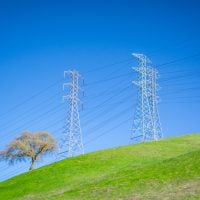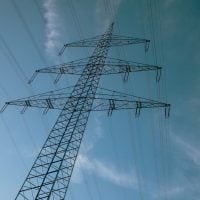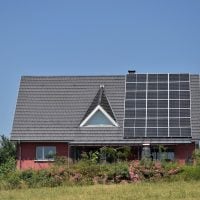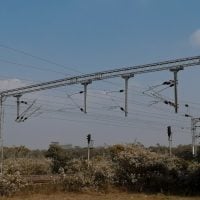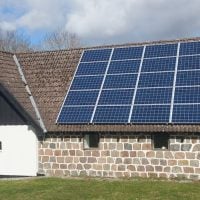As the world grapples with the escalating impacts of climate change, Africa stands at a critical juncture. The continent, rich in natural resources and cultural diversity, is also one of the most vulnerable to climate-related challenges. From rising temperatures to erratic rainfall patterns, the effects of climate change threaten not only the environment but also the socio-economic fabric of African nations.
In this context, the development of climate-friendly infrastructure emerges as a vital strategy for sustainable growth. This infrastructure encompasses renewable energy projects, sustainable transportation systems, and resilient urban planning that collectively aim to mitigate environmental impacts while promoting economic development. Climate-friendly infrastructure is not merely an environmental necessity; it is also an opportunity for innovation and job creation.
By investing in green technologies and sustainable practices, African nations can leapfrog traditional development pathways that often rely on fossil fuels. This shift not only addresses immediate climate concerns but also aligns with global sustainability goals, such as the United Nations Sustainable Development Goals (SDGs). As such, the role of donor support becomes paramount in facilitating this transition, providing the necessary financial resources, technical expertise, and capacity-building initiatives to ensure that climate-friendly infrastructure projects are successfully implemented. Are You Working on Solar Innovation or Clean Energy Access? Join us to receive updates.
The Importance of Donor Support for Climate-Friendly Infrastructure
Donor support plays a crucial role in the development of climate-friendly infrastructure in Africa. Many African countries face significant financial constraints that hinder their ability to invest in sustainable projects. Traditional funding sources often fall short, leaving a gap that donor organizations can fill.
By providing grants, low-interest loans, and technical assistance, donors enable countries to embark on ambitious infrastructure projects that might otherwise be unattainable. This support is particularly vital in sectors such as renewable energy, where initial capital costs can be prohibitively high. Moreover, donor support fosters innovation and knowledge transfer.
Many donor organizations have extensive experience in implementing climate-friendly projects across various contexts. By sharing best practices and lessons learned, they empower local governments and communities to adopt effective strategies tailored to their unique circumstances. This collaborative approach not only enhances project outcomes but also builds local capacity, ensuring that communities are equipped to manage and maintain these infrastructures long after donor funding has ended.
The Role of Top Donors in Supporting Climate-Friendly Infrastructure in Africa
Top donors play a pivotal role in shaping the landscape of climate-friendly infrastructure in Africa. These organizations, which include multilateral development banks, bilateral aid agencies, and philanthropic foundations, have the resources and influence to drive significant change. Their involvement often catalyzes additional funding from other sources, creating a multiplier effect that amplifies the impact of their contributions.
For instance, when a major donor commits to a renewable energy project, it can attract investments from private sector players who see the potential for profitability in a stable and supportive environment. Furthermore, top donors often set the agenda for climate action by prioritizing specific sectors or technologies. Their strategic focus can help align national policies with global climate goals, encouraging governments to adopt more ambitious targets for emissions reduction and sustainable development.
By leveraging their expertise and networks, these donors can facilitate partnerships between governments, NGOs, and private sector actors, fostering a collaborative ecosystem that is essential for the successful implementation of climate-friendly infrastructure projects.
Overview of the Top Donors Supporting Climate-Friendly Infrastructure in Africa
Several key players dominate the landscape of donor support for climate-friendly infrastructure in Africa. The World Bank Group is one of the largest sources of funding for climate-related projects on the continent, providing billions of dollars in financing for renewable energy initiatives, sustainable transportation systems, and climate resilience programs. The African Development Bank (AfDB) also plays a significant role, focusing on investments that promote green growth and sustainable development across its member countries.
In addition to these multilateral institutions, bilateral aid agencies such as the United States Agency for International Development (USAID) and the United Kingdom’s Foreign, Commonwealth & Development Office (FCDO) are actively involved in supporting climate-friendly infrastructure projects. These agencies often prioritize specific areas such as clean energy access or sustainable agriculture, tailoring their support to meet the unique needs of different regions within Africa. Philanthropic organizations like the Bill & Melinda Gates Foundation and the Rockefeller Foundation also contribute significantly by funding innovative solutions and pilot projects that demonstrate the viability of climate-friendly infrastructure.
Impact of Donor Support on Climate-Friendly Infrastructure Projects in Africa
The impact of donor support on climate-friendly infrastructure projects in Africa is profound and multifaceted. Financial contributions enable countries to undertake large-scale initiatives that would otherwise be impossible due to budget constraints. For example, donor-funded solar energy projects have transformed energy access in rural areas, providing electricity to communities that previously relied on expensive and polluting diesel generators.
This not only improves quality of life but also stimulates local economies by enabling businesses to operate more efficiently. Beyond financial support, donors also contribute to capacity building and knowledge sharing. By providing training programs and technical assistance, they empower local stakeholders to take ownership of projects and ensure their sustainability.
For instance, in Kenya, donor-supported initiatives have trained local engineers in solar technology installation and maintenance, creating jobs while ensuring that communities can manage their energy systems independently. This holistic approach enhances the long-term viability of climate-friendly infrastructure projects and fosters resilience against future climate challenges.
Case Studies of Successful Climate-Friendly Infrastructure Projects Supported by Top Donors
Several successful case studies illustrate the transformative potential of donor-supported climate-friendly infrastructure projects in Africa. One notable example is the Lake Turkana Wind Power Project in Kenya, which received significant funding from the African Development Bank and other international donors. This project has become one of Africa’s largest wind farms, generating over 300 megawatts of clean energy and providing electricity to thousands of households.
The project not only contributes to Kenya’s renewable energy targets but also creates jobs and stimulates local economic development. Another compelling case is the Solar Home Systems initiative in Rwanda, supported by various donors including USAID and the World Bank. This program has provided affordable solar energy solutions to rural households, significantly improving access to electricity while reducing reliance on kerosene lamps.
The initiative has empowered women entrepreneurs who sell solar products within their communities, demonstrating how donor support can drive both environmental sustainability and economic empowerment.
Challenges and Opportunities for Donor Support in Climate-Friendly Infrastructure in Africa
Despite the positive impact of donor support for climate-friendly infrastructure in Africa, several challenges persist. One major hurdle is the complexity of coordinating efforts among multiple stakeholders, including governments, NGOs, and private sector actors. Often, differing priorities and bureaucratic hurdles can slow down project implementation and lead to inefficiencies.
Additionally, many African countries face governance issues that can complicate the effective use of donor funds. However, these challenges also present opportunities for innovation and collaboration. By fostering stronger partnerships between donors and local stakeholders, it is possible to create more streamlined processes that enhance project delivery.
Furthermore, as awareness of climate change grows globally, there is an increasing willingness among donors to invest in innovative financing mechanisms such as blended finance or impact investing. These approaches can attract private sector investment while ensuring that social and environmental outcomes remain a priority.
The Future of Donor Support for Climate-Friendly Infrastructure in Africa
Looking ahead, the future of donor support for climate-friendly infrastructure in Africa appears promising yet requires strategic adaptation to evolving challenges. As climate change impacts become more pronounced, there will be an urgent need for increased funding directed toward resilience-building initiatives. Donors must prioritize projects that not only address current vulnerabilities but also anticipate future risks associated with climate change.
Moreover, as technology continues to advance rapidly, there is an opportunity for donors to invest in innovative solutions that enhance efficiency and reduce costs. For instance, integrating smart grid technologies into renewable energy projects can optimize energy distribution and consumption patterns. By embracing technological advancements and fostering collaboration among stakeholders, donors can ensure that their support remains relevant and impactful in addressing Africa’s unique climate challenges.
Collaboration and Partnerships between Donors, Governments, and Local Communities in Climate-Friendly Infrastructure Projects
Collaboration is essential for the success of climate-friendly infrastructure projects in Africa. Effective partnerships between donors, governments, and local communities can lead to more sustainable outcomes by ensuring that projects are designed with local needs in mind. Engaging communities from the outset fosters a sense of ownership and accountability that is crucial for long-term success.
For example, participatory planning processes allow local stakeholders to voice their concerns and preferences regarding infrastructure development. This approach not only enhances project relevance but also builds trust among stakeholders. When communities feel involved in decision-making processes, they are more likely to support initiatives that align with their values and aspirations.
Ensuring Sustainability and Long-Term Impact of Donor-Supported Climate-Friendly Infrastructure in Africa
To ensure sustainability and long-term impact of donor-supported climate-friendly infrastructure projects in Africa, it is essential to incorporate mechanisms for ongoing maintenance and capacity building into project design. This includes establishing local management structures that empower communities to take charge of their infrastructure systems post-implementation. Additionally, monitoring and evaluation frameworks should be integrated into project planning from the outset.
By setting clear indicators for success and regularly assessing progress against these benchmarks, stakeholders can identify areas for improvement and adapt strategies as needed. This iterative approach not only enhances project effectiveness but also fosters a culture of learning among all involved parties.
The Way Forward for Donor Support in Climate-Friendly Infrastructure in Africa
In conclusion, donor support is indispensable for advancing climate-friendly infrastructure in Africa. As the continent faces unprecedented environmental challenges, strategic investments in sustainable projects can pave the way for resilient economies and thriving communities. By fostering collaboration among donors, governments, and local stakeholders while prioritizing innovative solutions and capacity building efforts, we can create a future where climate-friendly infrastructure becomes a cornerstone of sustainable development across Africa.
The path forward requires a commitment from all stakeholders to work together towards shared goals while remaining adaptable to changing circumstances. With concerted efforts and strategic partnerships, we can harness the potential of donor support to transform Africa’s infrastructure landscape into one that is not only environmentally sustainable but also economically vibrant and socially inclusive.
In the context of supporting climate-friendly infrastructure in Africa, it’s essential to consider the broader landscape of funding opportunities that can drive sustainable development. A related article that might be of interest is the South Asia Regional Energy Partnership Fund Program. This program highlights the importance of regional collaboration in energy initiatives, which can serve as a model for similar efforts in Africa. By examining how different regions approach energy partnerships, stakeholders in Africa can gain insights into effective strategies for implementing climate-friendly infrastructure projects.


